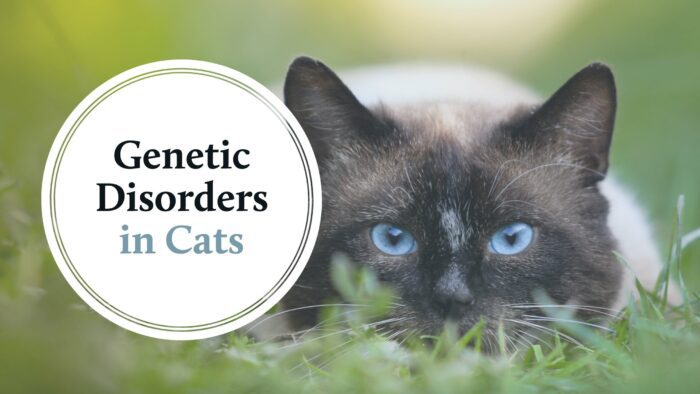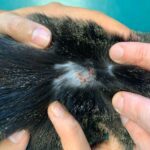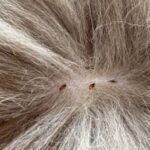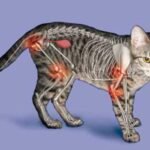Inherited disorders are genetic problems that are passed on from one generation to the next. There are certain disorders associated with particular breeds; a few of the most important are described here.
Why Do Genetic Problems Occur?
Inherited disorders result from faults in a cat’s genes—sections of DNA inside cells that hold the “instructions” for a cat’s development, body structures, and functions. Genetic disorders usually develop in small populations, or result from the mating of animals that are too closely related.
For this reason, such disorders are more common in pedigrees. Sometimes, screening tests are used to identify cats with inherited disorders.
Breed-Specific Problems
Because the gene pool may be quite small for each cat breed, faulty genes can have a greater influence than they would in a larger mixed-breed population, where such genes usually vanish after a few generations.
A disease such as hypertrophic cardiomyopathy (HCM) is mainly associated with the Maine Coon and Ragdoll, and is linked to one faulty gene. The disorder causes the heart muscle to become thicker and less elastic, which reduces the space inside the heart’s chambers and the volume of blood that the heart can pump.
This eventually leads to heart failure. Some cat breeds are actually characterized by inherited disorders—for example, in the past the crossed eyes of classic Siamese cats were the result of a visual problem.
An inherited disorder may be present when a kitten is born or may develop later in a cat’s life. Some cats may have a faulty gene but never develop symptoms. These cats are called carriers and can produce kittens with the inherited disease if they breed with another cat carrying the same faulty gene.
Many cat diseases are thought to be genetic in origin, but have not yet had faulty genes identified to explain them. The disorders listed in the table have all been confirmed as genetic. For some of them, screening tests are available to identify whether or not a cat has the faulty gene.
What Can Owners Do?
To help eradicate inherited disorders, responsible breeders should avoid using any cats known to have or to carry an inherited disorder for breeding by having them neutered.
If your cat has, or develops, a genetic disorder, try to find out as much information as possible about the condition. Most inherited disorders are not curable, but careful management can reduce symptoms and allow a good quality of life for your pet.
| Disease | Description | Can it be screened for? | Managing the disease | Breeds of cat affected |
| Primary seborrhea | Flaky or greasy skin and hair. | No specific screening test is available. | Wash the affected cat frequently with medicated shampoo. | Persian, Exotic |
| Congenital hypotrichosis | Kittens are born with no hair and are susceptible to infection | No test is currently available for this rare disorder. | No treatment. Keep the cat in a warm indoor environment, away from potential sources of infection. | Birman |
| Bleeding disorders | Excessive or abnormal bleeding after injury or trauma. | Yes. There are tests available for some types of bleeding disorder. | Look for non-healing wounds on your cat . Try to staunch blood flow and seek veterinary advice. | Birman, British Shorthair, Devon Rex |
| Pyruvate kinase deficiency | A condition that affects the number of red blood cells, leading to anemia. Reduces lifespan. | Yes. A genetic test is available. | Affected cats may need blood transfusions. | Abyssinian, Somali |
| Hypertrophic cardiomyopathy | Thickening of the heart muscle, usually results in heart failure. | Yes. A genetic test is available. | Drugs may be given to minimize the effects of heart failure. | Maine Coon, Ragdoll |
| Glycogenosis | Inability to metabolize glucose properly, leading to severe muscle weakness then heart failure. | Yes. A genetic test is available. | No treatment . Affected cats will need short-term fluid therapy. | Norwegian Forest Cat |
| Spinal muscular atrophy | Progressive muscular weakness, beginning in the hind limbs. Appears in kittens from 15 weeks old. | Yes. A genetic test is available. | No treatment. In some cases, the cat may survive with an adequate quality of life if given support . | Maine Coon |
| Devon Rex myopathy | General muscle weakness, an abnormal gait, and problems with swallowing. | No. Disorder first appears in kittens at 3–4 weeks old. | No treatment . Give affected cats small, liquid meals to avoid risk of choking. | Devon Rex |
| Hypokalaemic polymyopathy | Muscle weakness, associated with kidney failure. Affected cats often have a stiff gait and head tremors. | Yes. A genetic test is available for Burmese cats. | The condition can be managed with oral potassium. | Burmese, Asians |
| Lysosomal storage disease | Any of various enzyme deficiencies that affect many body systems, including the nervous system. | Yes. Some types of the disease can be screened and tested for. | No effective treatment . Affected cats usually die young. | Persian, Exotic, Siamese, Oriental, Balinese, Burmese, Asians, Korat |
| Polycystic kidney disease | Pockets of fluid (cysts) develop in the kidneys, eventually causing kidney failure. | Yes. A genetic test is available. | No cure. Drugs can be given to ease the workload of the kidneys. | British Shorthair, Persian, Exotic |
| Progressive retinal atrophy | Degeneration of the rods and cones in the retina of the eyes, leading to early blindness. | Yes. There is a test available for one form of the disorder, found in Abyssinians and Somalis. | No cure. Affected cats should be kept as safe as possible, away from potential hazards. | Abyssinian, Somali, Persian, Exotic |
| Osteochondrodysplasia | Painful degenerative joint disorder, leading to the fusion of tail, ankle, and knee bones. | No. To prevent, cats with folded ears should only be crossed with cats with normal ears. | Palliative treatment can help ease pain and swelling of joints. | Scottish Fold |
| Manx syndrome | A condition where the spine is too short, leading to spinal-cord damage and affecting the bladder, bowels, and digestion. | No. There is no specific test for this severe form of taillessness. | No treatment. Most kittens are euthanized when the disease becomes apparent. | Manx |





